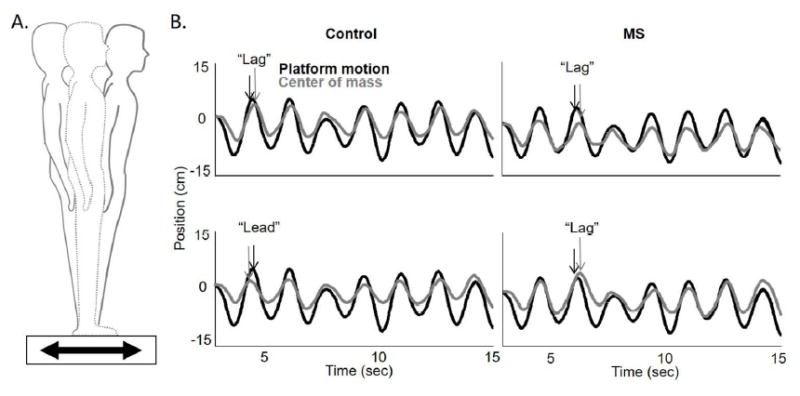Figure 1.

A) Schematic of an individual while on the movable force plate. Forward motion (black) of the force plate results in backward sway, while backward motion of the plate (grey) results in forward sway. B) Illustration of the position of the platform (black) and the center of mass (gray) for a control (left) and multiple sclerosis (MS; right) patient as it moved forward and backward during a trial. Temporal performance is noted as the difference in phase of the platform and center of mass. A “lag” in phase represents poorer performance, and “lead” represents improved performance. The top row shows the mean relative phase in the early training block, and the bottom row shows the late training block. With training, the phase “lag” relationship between the platform motion and center of mass changes to phase “lead” for the control participant but not so for the MS patient. Figure adapted from Gera G, et al. 2015; NNR; Dec. 23; pii:1545968315619700; DOI: 10.1177/1545968315619700.
